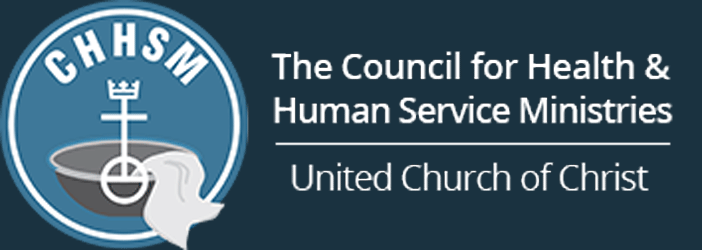Mental Health Leaders Urge Checking in with Ourselves and our Neighbors During Holiday Season and Beyond

The op-ed was co-written by Seven Counties Services/Bellewood & Brooklawn President & CEO Abby Drane, Minority Mental Health Project Founder Damon Cobble and National Alliance on Mental Illness (NAMI) Executive Director Nancy Brooks. Reprinted with permission.
Our community has been the epicenter of nationally recognized crises for the past two years. From the Covid-19 pandemic to extreme racial tension, trauma has impacted our families, our children and our overall mental health.
The nation’s experts have recently declared child and adolescent mental health as a national emergency. As mental health experts, we saw the early warning signs of mental health issues in our staff, area families and children in April 2020.
Our trauma is layered, intricate and has deep roots throughout our community.
Chronic stress can result from a wide range of circumstances. For some, it may stem from societal issues like racism or socioeconomic divides. For others, it may come from trying to support a loved one who is recovering from an addiction. Whether stress is caused by an ongoing hardship like needing food or childcare or an isolated situation like a sudden job loss, the impacts can be devastating.
It’s time for us to come to terms with the devastating impacts on our children, too. When parents in essential industries had to go into work rather than working from home during the pandemic, these changing family dynamics forced children into “parent” and “teacher” roles.
These changing demands on families for a sustained period have negative consequences. According to the CDC, hospital visits related to mental illness increased by 24 percent among 5 to 11 year olds and increased by 31 percent among 12 to 17 year olds.
Suicides by youth in Jefferson County, Ky. [which includes Louisville], also reached a decade high in 2021, particularly among our young people of color. Of the 53 total deaths by suicide in the under 25 age group, 40 percent were Black, Hispanic or Indigenous. Suicide remains the second leading cause of death among children and 10th cause among adults.
However, our children are living proof of the resiliency and strength that still exists in our community. If 2020 was a year of uncertainty, 2021 was the year we started talking about it.
According to the National Alliance on Mental Illness, negative attitudes and beliefs towards those living with mental health conditions can be particularly strong within the Black community. One study showed that 63 percent of Black people believe that a mental health condition is a sign of personal weakness.
To address the stigma in the Black and Indigenous People of Color (BIPOC) communities, the Minority Mental Health Project of Louisville increases awareness of the resources available to help those living with mental health challenges and connects more individuals and families with the support they need.
Kids are certainly talking about suicide and mental health more than adults. However, a total of 87 percent of American adults agreed that having a mental health disorder is nothing to be ashamed of, and 86 percent said they believe that people with mental health disorders can get better, according to the American Psychological Association.
In that spirit, we must be able to talk about our feelings openly and candidly to end the stigma, especially with the approaching holiday season and family gatherings likely increasing. We must be mindful and compassionate with ourselves, but we must also show empathy and care to others and provide a listening ear when we can. Here are some tips to consider for yourself, your loved ones and your neighbors this season and into 2022.
- Prioritize rest. The amount of sleep a person gets is the number one indicator of a mental or behavioral health problem. The holidays certainly put more pressure and time restraints on people. Make sure you and those around you are prioritizing sleep as routines shifts and travel increases.
- Take a break from social media and embrace family time. We’d be kidding ourselves to think that social media doesn’t influence our behavior. Use the holidays as a time to unplug, take a break from your phone and spend time with family.
- Help someone else practice self-care. Many parents may be working overtime to purchase a holiday gift or provide a hot meal for their family this year. Help someone else practice self-care by offering to babysit or take an errand off their list.
- Get involved. Taking advantage of events planned by local organizations is another great opportunity for families to spend time together and pull kids away from distractions.
- Check for warning signs of mental illness. The holidays are coined as “the most wonderful time of year,” but this isn’t the case for everyone. Look for signs of mental illness in your loved ones or people you see regularly, including:
- Saying things like: “You’d be better off without me,” “being a burden” or “feeling trapped”
- Actively looking for ways to hurt themselves (e.g., Drinking, substance abuse))
- Acting reckless
- Withdrawing from activities, hobbies or things they typically like to do
- Getting too much sleep or too little sleep
- Seeking revenge, rage or becoming disobedient
- Experiencing mood swings
- Giving away possessions
- Showing changes in school performance
If you, or someone you know, is experiencing an emergency, please call 9-1-1.
Join Our Mailing LIst
"*" indicates required fields
Follow on Facebook
Hoyleton Time Capsule Reveals Treasure Trove of History - CHHSM
www.chhsm.org
Old newspaper articles, newsletters — some in German, a letter from the past describing an effort that would become a successful CHHSM ministry. These were among the treasures discovered during the ...